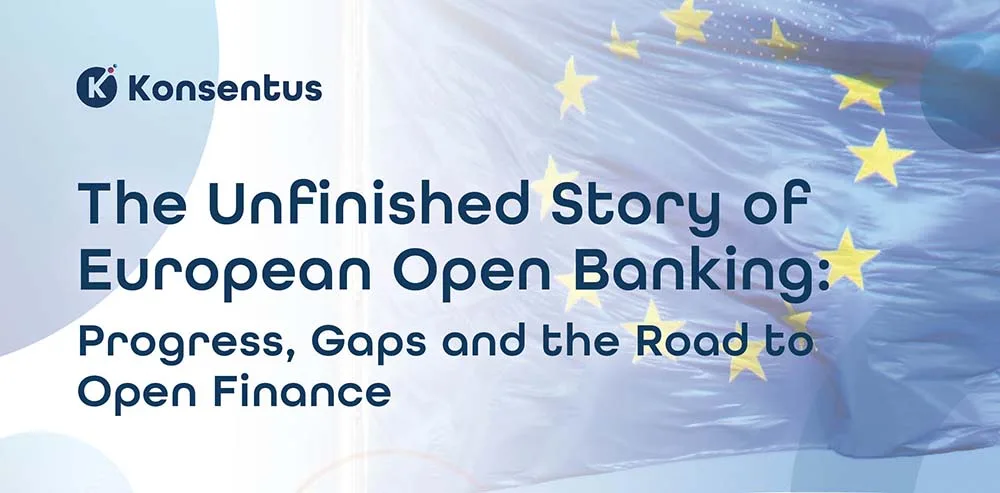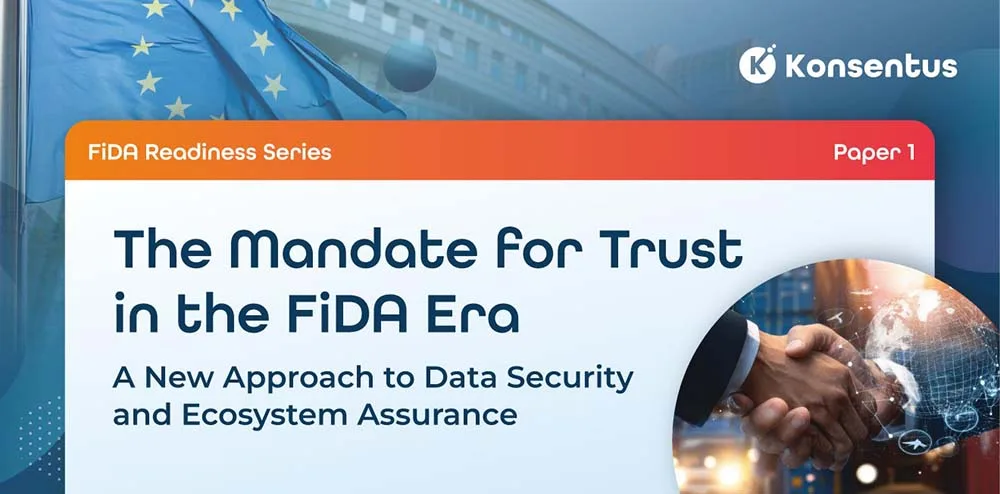Open banking in Europe began as a regulatory project, not a market-led innovation. When the EU introduced the revised Payment Services Directive (PSD2), it effectively forced banks to open up access to customer accounts, allowing authorised third-party providers (TPPs) to build new services around payments and data.
For many banks, this was initially seen as a compliance headache rather than an opportunity. Yet over time, attitudes have evolved. Today, a growing number of financial institutions are turning open banking from an obligation into a strategic advantage, using APIs and partnerships to unlock new business models.
Meanwhile, hundreds of third-party providers have entered and reshaped the financial landscape, some domestic, others operating across borders under the EU’s passporting rules. However, tracking the true adoption of open banking across Europe remains difficult, with no single reporting body or consistent data standards; Europe’s open banking story is fragmented and hard to measure.
Regulatory Roots of Open Banking – PSD2: A Law that Opened the Doors
The Second Payment Services Directive (PSD2), adopted by the EU in 2015 and implemented from 2018, was designed to make payments more secure, improve consumer protection and stimulate competition. Its most revolutionary clause, known as access to account (XS2A), required banks to grant regulatory-licensed third parties access to customer account information and payment initiation, as long as the customer gave consent.
The European Banking Authority (EBA) created technical standards to make this possible, including the rules for Strong Customer Authentication (SCA) and secure APIs. Each member state then translated PSD2 into national law, resulting in a patchwork of implementations and technical variations.
Beyond PSD2: Towards Open Finance
PSD2’s success and its limitations set the stage for the next evolution in open finance. Policymakers and industry groups across Europe now recognise that data sharing shouldn’t stop at payments. Broader financial data such as mortgages, pensions and insurance are seen as the next frontier. However, as the scope expands the regulatory and measurement challenges grow too.
Early Reactions: Banks vs Third Parties and Reluctance to Realisation
In the early years, most banks viewed open banking as little more than a regulatory compliance project. They faced short implementation timelines, strict security requirements and no clear way to monetise the investment.
As a result, the focus was on doing the minimum to comply. APIs were often treated as a defensive measure, a necessary cost to avoid fines, not a tool for growth.
However, over time, perspectives began to shift. A number of forward-looking banks realised that the infrastructure built for compliance could also become the foundation for innovation and growth. They began investing in developer portals, launching commercial APIs (better known as premium APIs) and forming partnerships with fintechs to co-create new services.
Today, there is a divided landscape:
- Some banks have moved decisively toward platform thinking, using open APIs to expand distribution, streamline onboarding and to create data-driven products.
- Others remain cautious, citing fraud risk, liability concerns and uncertain returns.
Still, the overall direction of travel is clear, open banking is moving from obligation to opportunity.
Third-Party Providers: The New Entrants and the Evolving Landscape
Third-Party Providers (TPPs), including Account Information Service Providers (AISPs) and Payment Initiation Service Providers (PISPs), are the real catalysts of open banking innovation. They use bank data and payment access to power personal finance apps, instant payment solutions, SME accounting tools and even credit risk models.
The TPP community spans nimble startups to established fintech brands and major technology companies. Many of them leverage the European Union’s passporting framework to operate across borders in multiple jurisdictions, although the technical and regulatory differences between member states can make such expansion complex.
Since PSD2 went live, the number of registered third-party providers has grown rapidly, however though not without churn. By the end of September 2025, the Konsentus Q3 TPP Open Banking Tracker reported 537 authorised TPPs across the UK and EEA. That number fluctuates slightly quarter to quarter, as some firms consolidate or exit the market while others gain authorisation.
More than half of these TPPs (about 60%) are now active beyond their home market, operating across multiple European jurisdictions. This reflects both the ambition and the flexibility of PSD2’s passporting model.
However, while TPPs can legally scale across Europe, the operational reality is tougher. Each country has its own technical standards, language barriers and bank-specific API quirks. As a result, TPPs often provide similar services across borders but have to adapt them locally to meet market conditions and compliance requirements.
The Data Problem: Why Uptake is so Hard to Measure
Despite the enormous regulatory effort and industry transformation, there is still no clear, EU-wide picture of how open banking is being used, the level of customer engagement from country-to-country, or the number of total transactions (i.e. successful vs failed transactions) initiated.
Several factors explain this:
- National Fragmentation
PSD2 set a European framework but national regulators handle implementation. Each country has its own laws, rules, registers and interpretations, which makes it impossible to build a single, harmonised dataset.
- No Common Reporting Standard
While banks must publish certain API performance data, there is no EU requirement to report usage metrics such as the number of API calls, transactions or active users.
- Commercial Confidentiality
Banks and TPPs treat usage data as commercially sensitive. Even when shared, definitions vary what counts as an “active user” or “transaction” differs across markets.
- Evolving Scope
As open banking expands into open finance, more sectors and datasets are added. Each new area introduces its own metrics, further complicating any attempt at aggregation.
- Market Churn
Registration numbers don’t always reflect active participation. Some firms gain authorisation but never launch; others merge or pivot to different models.
The result is that, unlike payment volumes tracked by central banks, there is no single source of truth for open banking adoption in Europe. Analysts and regulators must piece together a mosaic of partial data from industry trackers, national registers and bank disclosures.
Market Implications
The European experiment with PSD2 has proven that regulation can spark innovation, but has also shown that fragmented reporting makes evaluation difficult. As discussions around PSD3, PSR and the Financial Data Access Regulation (FiDA) progress, policymakers have the opportunity to introduce harmonised metrics for measuring adoption and performance.
Banks that treat open banking purely as compliance are likely to fall behind. Those that embrace it strategically can create value, whether through partnerships, new revenue streams or operational efficiencies. The challenge is to combine strong security and regulatory compliance with a developer-friendly, commercially open mindset.
TPPs face both opportunity and complexity. Cross-border operations require deep localisation and strong compliance capabilities. As the market consolidates, the organisations that will thrive are those that balance scalability with trust and clear monetisation strategies.
A Vision for the Future
Europe’s open banking story is still being written. What began as a top-down regulatory push has evolved into a dynamic ecosystem of collaboration between banks, fintechs and regulators.
Yet to move from experimentation to maturity, Europe needs:
- Common, transparent metrics for usage and performance
- Stronger interoperability across markets
- Clear commercial models that reward collaboration rather than compliance
Open banking has already changed how financial data and payments work. The next step – open finance – could redefine the entire financial services landscape. But for that vision to take hold, Europe must first learn to measure its own progress.
Ready to prepare for the next chapter of open banking and the shift to open finance? Get in touch to find out how we can help you navigate the complexity, close the gaps and build a future-ready strategy.




